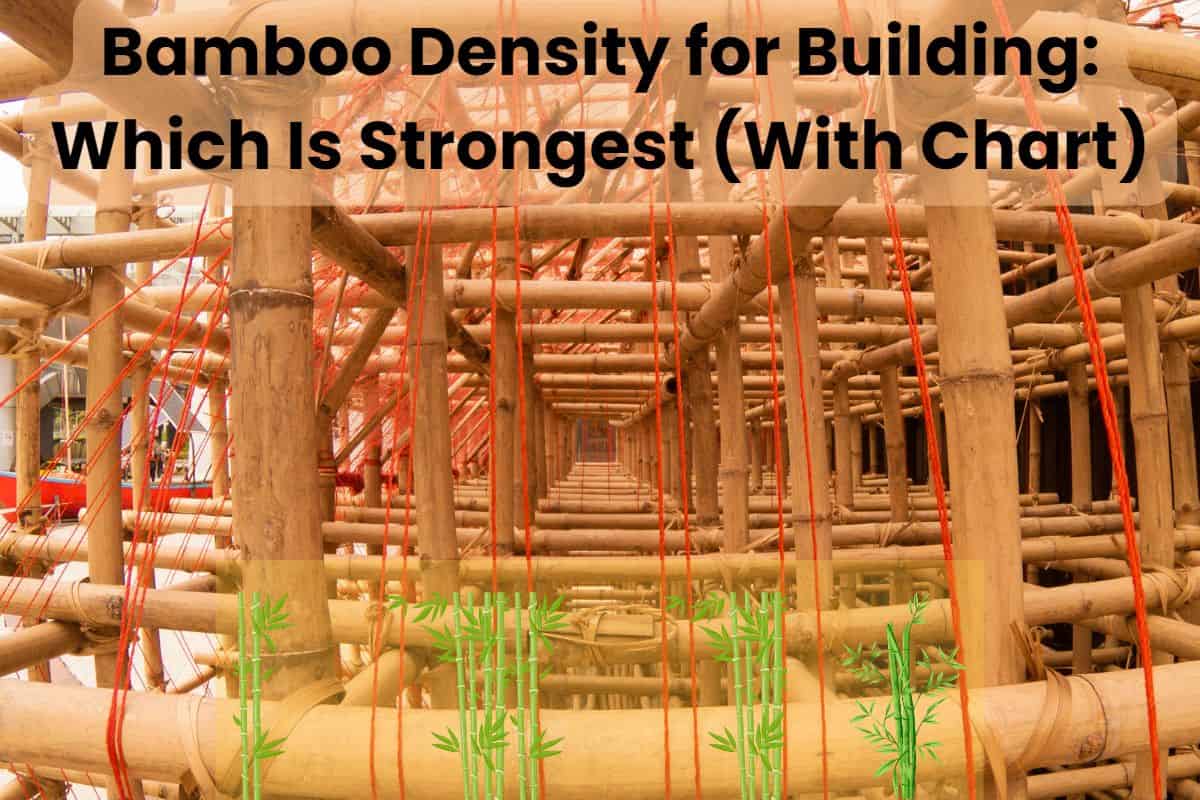Sustainable Construction: The Top 10 Methods to Build With

The construction industry accounts for 40% of global greenhouse gas emissions.
Unsustainable construction methods are a major contributor to this problem because they consume a lot of energy and emit enormous amounts of waste.
Therefore, shifting to sustainable construction methods is an excellent way to minimize greenhouse gas emissions from the construction industry.
The green building industry has come a long way in recent years, and sustainable construction methods prioritize recyclable and renewable materials to conserve the earth’s resources.
Moreover, since the construction industry accounts for 30% of the total global energy consumption, these methods aim to decrease emissions and promote a more circular economy for a sustainable world.
In the rest of this article, I’ll discuss the top 10 sustainable construction methods that will help conserve the environment and reduce your household energy consumption.
Keep reading to find a sustainable construction method suitable for your needs.
1. Using Green Construction Materials

The use of green building materials is the most sustainable construction method.
Green building products are natural, recyclable, and contribute to minimal environmental pollution. These materials include recycled steel, cork, straw bales, and bamboo.
Renewable and recycled materials help conserve natural resources and reduce energy use in manufacturing. Alongside energy conservation measures, they are one of the best ways environmentally responsible construction firms can minimize their environmental impact.
Moreover, sustainably sourced raw materials don’t contain toxic chemicals that can be released into the environment during construction or demolition.
If you want to use wood as a green building material, you must source it from a sustainable forest. These are carefully managed forests whereby each fallen tree is replaced with a seedling that grows to maturity.
All in all, using green building materials is one of the top green building methods you should consider for your next construction project.
2. Prioritizing Local Sustainable Materials
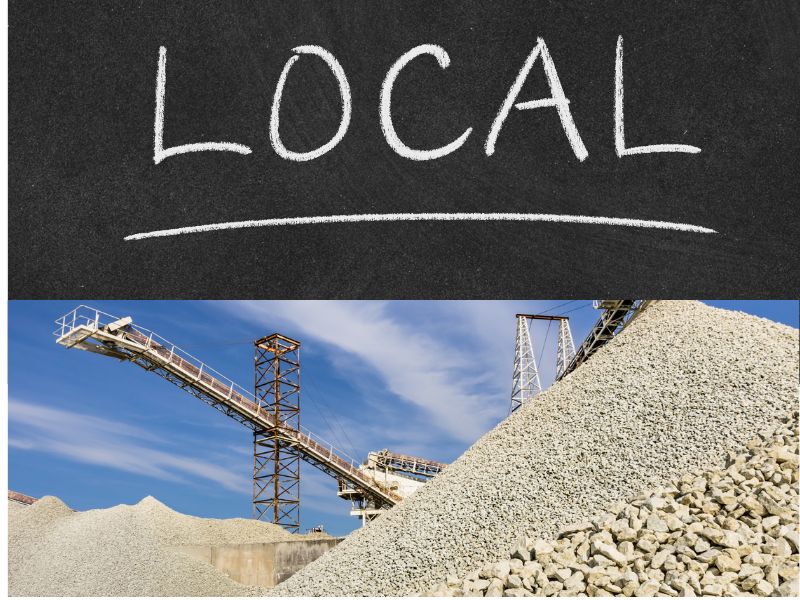
The lifetime energy consumption of a building takes into account embodied energy. Embodied energy is the energy used in the production and transportation of building products.
More than 70% of the total embodied energy in buildings results from the production and transportation of cement, steel, and bricks.
Prioritizing the use of local sustainable building materials is a sustainable approach as it eliminates or minimizes transportation needs. This plays a central role in reducing the overall energy requirement of your construction project.
Instead of transporting concrete bricks manufactured elsewhere, you can rely on local materials such as clay, wood, straw, adobe, and stones.
Besides saving transportation costs, this method eliminates carbon dioxide emissions from the trucks transporting the materials.
Here is a table that shows the energy consumption of transporting building products per kilometer:
| Material | Energy (MJ/tonne/Km) | Material | Energy (MJ/tonne/Km) |
| RMC concrete | 0.10 | Chipboard flooring | 0.29 |
| RMC mortars | 0.05 | Plasterboard | 0.24 |
| Dense concrete blocks | 0.02 | External plaster | 0.62 |
| High-density blocks | 0.09 | Internal plaster | 0.48 |
| Thermal blocks | 0.05 | Windows | 0.33 |
| Concrete lintels | 0.72 | Roof slates | 2.55 |
| Structural steel beams | 0.08 | Celtex insulation | 7.92 |
| Steel shuttering | 0.16 | Angle ties | 49.24 |
| Concrete reinforcement | 0.36 | Zinc phosphate paint | 1.34 |
| Roofing timber | 0.15 |
Table 1: Energy consumed in transportation of building materials. Source: University of Brighton
3. Incorporating Greywater Recycling Systems

An average family uses approximately 300 gallons of water daily.
Greywater accounts for 60 to 70% of total household wastewater production. Recycling and reusing this water go a long way toward reducing total water consumption.
Greywater recycling systems contribute significantly towards sustainable construction.
These systems utilize wastewater from showers, bathroom sinks, and washing machines for non-potable purposes such as irrigating plants and lawns.
Sometimes grey water is collected for later use, which requires treating water on-site before storing it. However, these systems can have high running costs, and their environmental benefit is not always clear.
The best option is often to directly reuse grey water for watering outdoor plants.
Incorporating this system into your construction design reduces freshwater use by up to 50 percent. Consequently, besides having low water bills, such a system will help reduce pressure on water sources.
4. Incorporating Modular Construction Techniques
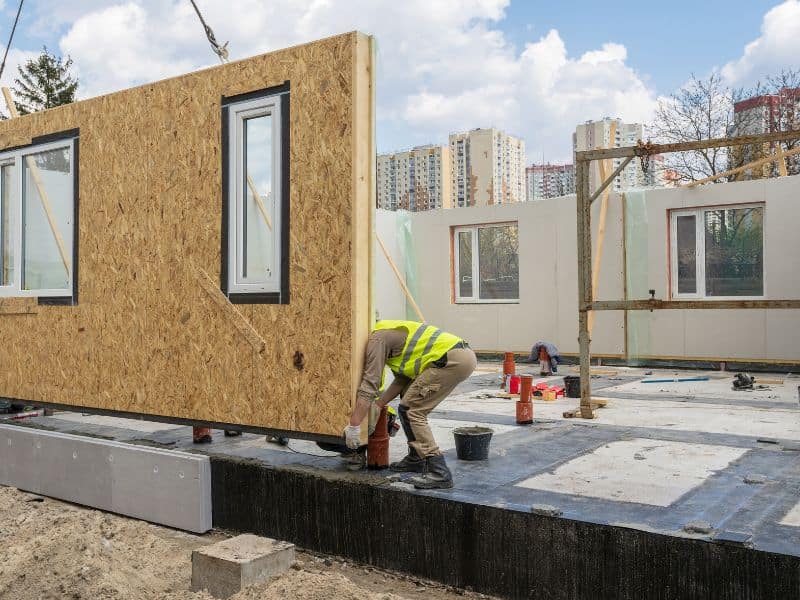
The construction sector generates enormous waste. According to Environmental Protection Agency, the industry is responsible for 600 million tons of debris in the form of:
- Glass
- Plastic
- Wood
- Steel
- Surplus concrete
- Broken bricks
Modular sustainable building techniques aim to solve the issue of waste from the construction industry.
These techniques entail building modular structures in a controlled environment with minimal wastage.
The structures are then transported to the construction site and assembled into a larger structure on-site.
The main advantage of these sustainability efforts is that they minimize construction waste by up to 90 percent, thus improving sustainability.
Moreover, they reduce project duration and increase efficiency since most of the work takes place in a factory rather than onsite. This helps to avoid delays due to weather.
5. Using Green Roofs
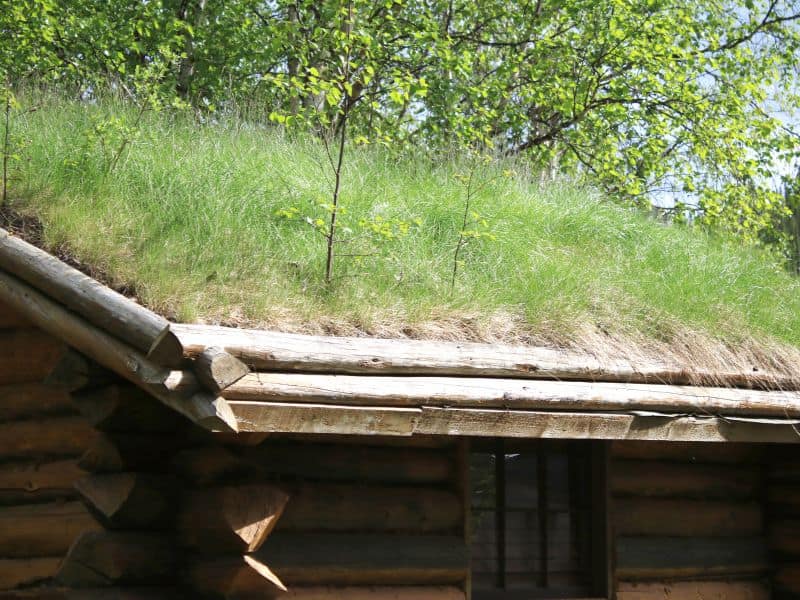
Heat islands occur in urbanized areas with limited vegetation and abundant hard surfaces like buildings and roads
These surfaces absorb and re-emit the sun’s heat more than natural surfaces like vegetation, leading to higher temperatures and uncomfortable conditions for those who live there.
Green roofs are a sustainable construction method which counteract the heat island phenomenon.
Simply put, a green roof, also referred to as a living roof, is a roof that is fully or partially covered with vegetation. Using these sustainable methods, roof designs come with the following benefits to the environment:
- Reducing the heat island effect: They reduce the rate at which the roofs absorb and radiate the sun’s heat.
- Reducing stormwater runoff: Green roofs are effective in attenuating rainwater runoff, thus preventing it from overwhelming gutters or sewers. In places with combined sewers, this prevents foul water from overflowing into rivers, improving surface water quality.
- Improving air quality: They act as natural air filters by absorbing dust particles and other harmful pollutants from the air.
- Providing insulation: These roofs act as a “green insulation” that can mitigate extremes in heat and cold, maintaining an optimal temperature in hot and cold climates. Therefore, they reduce the heating and cooling energy required in green buildings.
- Increasing the roof’s lifespan: Constant exposure to elements such as rain, ultraviolet light, and fluctuating temperatures can damage a roof. However, a green roof benefits from an increased lifespan due to the extra protection provided by the vegetation and soil.
Besides the environmental benefits, green roofs add aesthetic and biodiversity value to a sustainable building and extend its lifespan.
6. Using Rammed Earth Building Materials
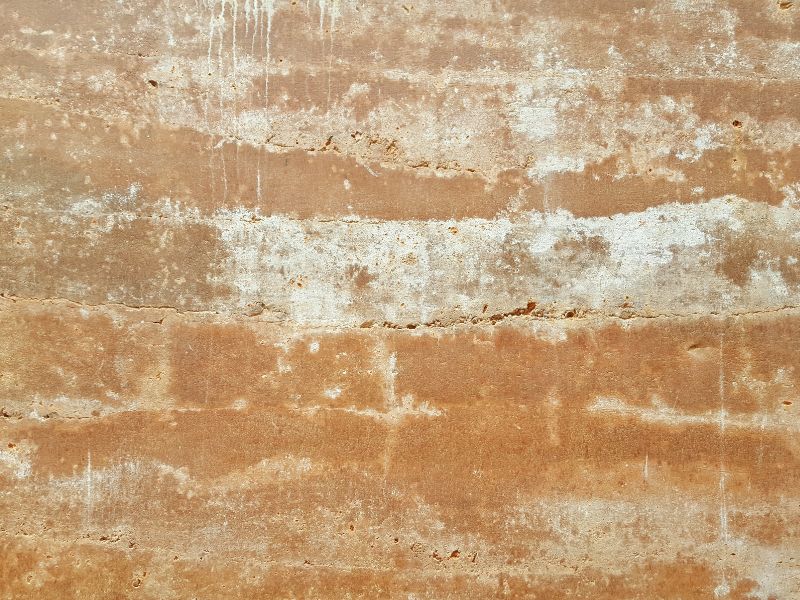
Rammed earth bricks are a sustainable construction method and are an ancient building material used throughout history by many civilizations. These bricks are made by ramming sand, gravel, clay, and silt into a formwork.
The resulting material is one of the most sustainable construction materials with excellent thermal resistance and fireproof properties.
Besides, rammed earth brick is inexpensive and easy to produce since it uses natural resources. The compressive strength of these green alternatives to fired clay bricks increases with age due to the cementation process.
You can enhance the waterproofing mechanism of rammed earth bricks through tech-dry plasticure.
The approach involves using a water-based silicone admixture to enhance the water resistance capability of these bricks.
If you’re a green construction purist, you might be reluctant to use this, but it’s worth looking into because it will help to make your rammed earth structures more durable.
If you’re interested in rammed earth construction, please read our article “All About Compressed Earth Blocks: Pros And Cons To Consider.”
7. Incorporating Rainwater Harvesting Systems

Water scarcity is becoming a major concern in numerous parts of the world due to population growth and climate change.
Installing rainwater harvesting systems is an effective, sustainable construction method to tackle this shortage.
They are efficient water supply systems that comprise components such as gutters, water tanks, pumps, and filtration systems.
The rainwater collected from these systems is suitable for showering, irrigation, and laundry activities in homes. This goes a long way in reducing freshwater demand in households and conserves it for other uses.
8. Investing in Water-Efficient Products
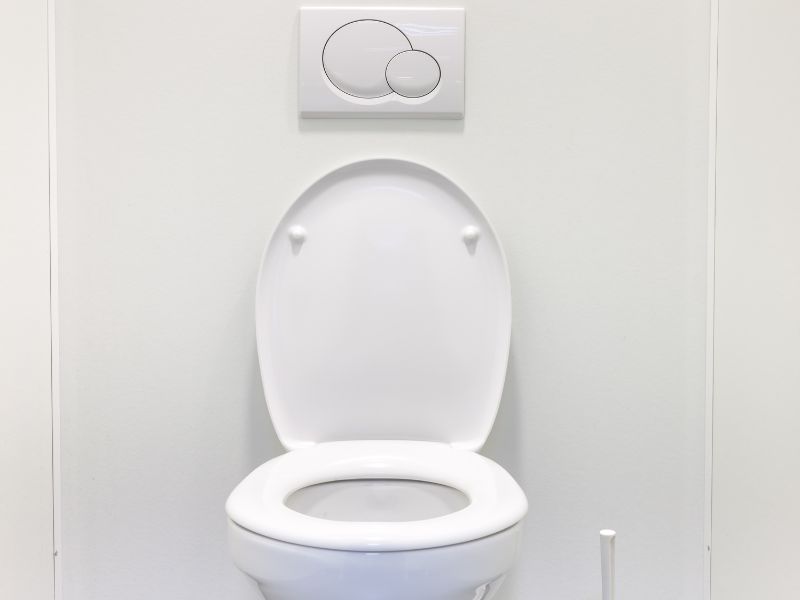
In green construction, water systems like showerheads, faucets, and toilets should normally be designed to use less water than in the past when efficiency was not such a priority.
However, this is not always the case.
For example, you may have noticed that your showerhead and taps use more water than necessary. This is especially true for older, traditional models, which consume a lot of water.
Instead, it’s advisable to invest in modern water-efficient products that save up to 30% of your water usage.
Investing in water-efficient technologies is a sustainable construction method that aims to conserve water.
An excellent way to approach this is by only installing water systems with a WaterSense label from the Environmental Protection Agency (EPA). The label means that the product is water-efficient and will help you to save water without compromising on functionality.
Alternatively, you can install low-flow fixtures to reduce water wastage. These fixtures include toilets, showerheads, and faucets whose primary function is to use less water while maintaining the same functionality level.
9. Making Use of Renewable Energy Sources
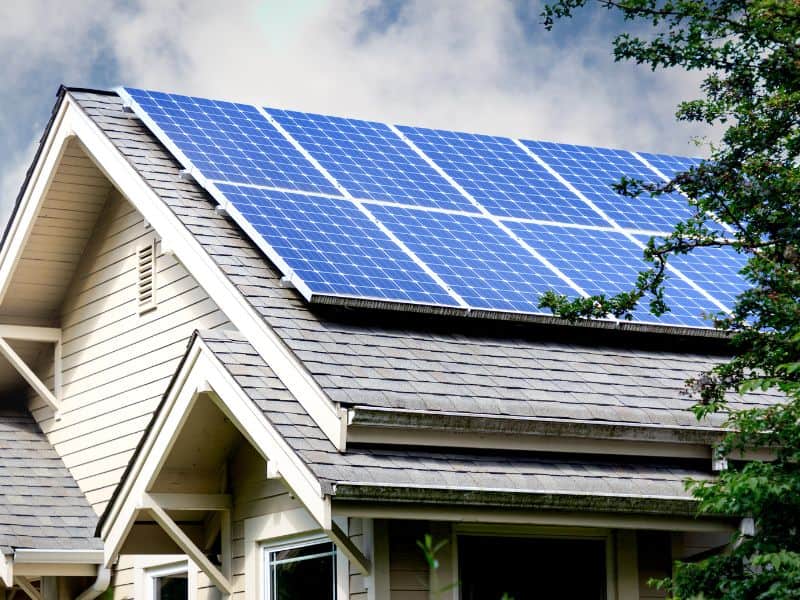
You’ll agree that the cost of energy is at an all-time high. For example, according to the U.S. Energy Information Administration, the cost of electricity in America is 14.9 cents per kilowatt-hour on average.
So, it’s more important than ever to make our homes more energy efficient, and this is where green technology such as passive solar power and solar panels come in.
Installing renewable energy sources in a building is a sustainable way to reduce energy bills. Solar panels, for instance, are an excellent way to tap into the sun’s free and natural energy.
You can go a notch higher and build the house based on the passive solar concept. According to this concept, sustainable buildings’ design and location maximize solar radiation for winter heating.
One way to achieve this is by designing the windows on the southern-facing side of the house to receive solar radiation throughout the day. This is a typical example of passive solar design, which can be a very effective way to harness the sun’s energy.
You should also consider using active solar power, which uses liquid or air to heat the house or save the energy for later by storing it.
Functional solar systems may also qualify for a rebate from your utility company. If you install enough solar energy-generating systems, your house could join the expanding ranks of self-powered buildings, further cutting your energy costs.
Since it’s a clean energy source that doesn’t use fossil fuels, solar power makes the environment healthier by reducing greenhouse gas emissions.
You can further enhance these benefits by buying the most energy-efficient appliances for your home. A list of ENERGY STAR products is available on the official government website to help you find appliances with the best energy efficiency.
Alternatively, you can design the building to utilize geothermal energy. For example, you can install geothermal heat pumps to use heat from the ground to warm the house in winter and cool it in summer.
10. Selecting a Sustainable Site Location

Site location is an essential consideration in sustainable construction.
An environmentally-conscious project should not be on prime farmland, threatened animal habitats, or wetlands to preserve their natural state.
Besides, construction sites should be close to infrastructure and services such as transportation networks, electricity, and water systems.
This way, you won’t have to install excess energy sources or long pipelines when constructing the structure.
Thoughtful location of your sustainable building close to public transportation links, shops, and services can also cut down on the number of car journeys, which contribute to global warming.
Final Thoughts
Sustainable construction is crucial to conserve the environment and save energy.
Employing sustainable construction methods can reduce energy and water wastage, ensure clean, renewable energy sources, and maintain the natural environment.
Investing in sustainable construction methods will help you save money while minimizing your carbon footprint and preserving the environment for future generations.
For more reading on sustainable building materials, check out our article entitled “23 Sustainable Building Materials You Can Use Today.”




